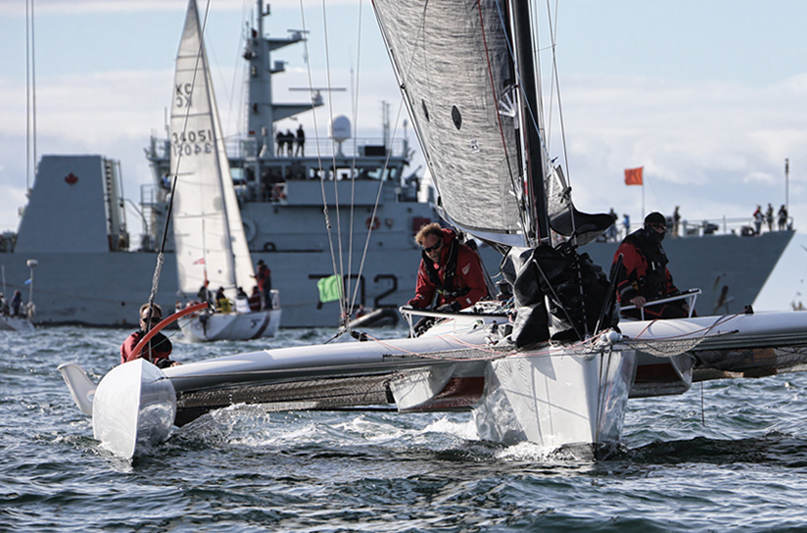
This year marked the official 75th anniversary of the iconic Swiftsure International Yacht Race, and with it comes the annual migration of boats northward from Seattle and south from Vancouver to converge in Vancouver Island’s picturesque Victoria Harbour. Hosted by the Royal Victoria Yacht Club, the race has long held the title of the premiere event of the Northwest sailboat racing calendar. Originally, the Swiftsure was a way for private yachtsmen to measure themselves up against the Royal Navy as well as one another, and while over the years the boat technology has changed, the prestige of the event has not flickered. With nearly a century of racing heritage in the Northwest, this year’s racing lineup did not disappoint. With over 150 boats taking part in the long course races and nearly 50 boats participating in the inshore races, the event continues to stand tall as the most well-attended event in the region. Though the traditional lightship Swiftsure has long since pulled its anchor, the heritage of the race is more than enough to keep it permanently pinned on the racing calendar.
This year’s race stacked up to be quite a challenge, with lighter winds in the morning and intense currents pushing the fleet away from the goal. The fleet was spread out across several courses and scoring options, creating somewhat of a “choose your adventure” format for the race, leaving it up to the owners of each boat to decide where to go and what handicapped system they would like to be scored. Politics aside, nearly 20 boats decided to “go to the bank” as the traditional lightship course is referred to. The fleet ranged from the carbon fiber rocket ship Crossfire, which had the overall record in their sights, all the way to the Glenn Wakefield’s SS West Wind II coming in at an honorable 156 PHRF handicap. The shorter Cape Flattery course, racing under PHRF handicap, dominated the standings with the most boats registered. With over 60 boats heading to Neah Bay and then back to Victoria, the medium course has grown over the years and now represents some of the closest racing the Salish Sea offers.
Saturday morning had all the buzz that Northwest racers have come to expect. The Canadian naval ship was on-station and fired its cannon, signaling the starting sequence counting down to each fleet. Wave after wave of sailboats headed off as the morning wore on, and before long all that sailors could hear was the crash of their own boats through the waves as the fleets spread out along the long upwind beat towards their respective turning marks.

The traditional funnel of Race Passage was set to close quickly after the start, leaving only the quickest boats able to get through before current slammed the door on the rest of the fleet, forcing them to work around the rocks and out into the Strait of Juan de Fuca. Heading onward into the strait, the wind began to fill in and the leading fleets battled upwind into 20 knots of wind and a building sea state as the opening to the Pacific Ocean came into view.
The wind subsided as the afternoon continued, leaving those headed offshore to the bank wishing for pressure overnight as they fought to keep moving towards the turnaround point. Eventually, albeit the next morning, the boats that ventured out into the open ocean were able to get a taste of what the short course fleets had enjoyed through the night. The traditional westerly winds in the high teens, combined with a full moon, had the Neah Bay, Clallum Bay, and Hein Bank fleets sending it into the night at full speed. Steady winds brought the fleets into the finish without the traditional three-hour drift to cross the line in the hole that at times surrounds Victoria Harbour.
All in all, the 75th running of the Swiftsure International Yacht Race will surely go down in history as one of the good ones. As close to steady wind as it gets, full fleets, and tough, close racing across the board gave everyone reasons to mark it on their calendars for next year. Even though the traditional spring season wrapped up with the Swiftsure finale, there is still plenty of racing to report on, including several special events — the now-legendary Race to Alaska (R2AK) run to Alaska (running as this is written) as well as plenty of one design action and the return of J-Fest to Seattle. Look here for updates across the board over the next few months!